 Read the peer reviews for this feature.
Read the peer reviews for this feature.
Download the graphs for this feature.
As the nation settles down to five unexpected years of Conservative majority rule, it would not be controversial to say that there is an element of relief among senior figures in the rail industry - not least because of the continuity in government policy, but also because the ministerial top team has barely changed.
Patrick McLoughlin remains as Secretary of State for Transport - he took over the post in September 2012, making him already the third longest incumbent in the past 20 years. Only John Prescott (1997-2001) and Alistair Darling (2002-2006) served longer.
Meanwhile, at Parliamentary Under-Secretary of State level, Claire Perry continues as rail minister, albeit with the responsibility for freight handed to Robert Goodwill. Both are respected by the industry and are thought to have effectively batted for its corner so far - although the outcome of the next Spending Review may change that perception.
Baroness Kramer has left the government as a result of the electoral crushing of the Liberal Democrats (and hence the redundancy of the need for another coalition). But Harrogate and Knaresborough MP Andrew Jones has joined the Department, with specific responsibility for the refranchising of Northern and TransPennine, and for electrification (having served on the Northern Electrification Task Force).
On a similarly continuous note, the transport team at the opposition has remained unchanged. With Labour’s leadership contest not set to come to an ultimate conclusion until September, it will be several months before any new leader can appoint a new Shadow Cabinet. As a result, the abrasive Michael Dugher (Barnsley East) has retained his role as Shadow Transport Secretary, while the well-briefed Lillian Greenwood (Nottingham South), consistently a strong supporter of rail, remains in place as shadow rail minister. Whether they remain in place under Andy Burnham, Yvette Cooper, Liz Kendall or Jeremy Corbyn post-September is anybody’s guess.
The Conservatives’ first General Election win since 1992, and the general welcoming of what that brings by rail industry leaders, does not mean that there was nothing of merit in Labour’s rail policy.
There was sympathy with its idea of a ‘guiding mind’, elements of which will continue to be taken forward by the DfT Rail Executive, as well as the various working groups in the Rail Delivery Group and (on a systemic level) the Association of Train Operating Companies. However, passengers will rightly bring pressure on government and train operators to keep ever-rising fares in check - an issue on which Labour had focused heavily as part of its cost of living campaign.
Whether McLoughlin is able to continually defend his Department’s budget against pressure from the Chancellor is open to question. Speculation - not just from industry observers, but even from those within the DfT itself - has suggested that the Department may be reduced to becoming merely a spending outpost of George Osborne’s Treasury, his grip tightened with another five years and budgets for non-protected areas (in other words, not health, education nor international development).
The need to ensure Network Rail’s money is spent more efficiently has also led to the suggestion that Control Period 5 merges with CP6 - a sign that the available funds need to go further on major infrastructure projects such as electrification schemes, but also that there simply is less money to go round.
However, attention now turns inevitably to the detail of the Conservative manifesto - and the detail of the transport-related pledges, for they are all interlinked.
The most topical issues may not have an immediate bearing on the railway. Conservative plans for new legislation that will make it much harder for trade unions to go on strike are in their infancy, having only just been announced in the Queen’s Speech delivered a few weeks after the election. Under a future law, public transport would be included as an ‘essential public service’. As such, more than 40% of unionised employees on the railway would have to take part in ballots and be in favour of strike action for it to go ahead. This threshold was not reached in RMT action on the London Underground earlier this year, but was under the more recent ballots by RMT members at Network Rail, leading to the threat of a national rail strike in June.
Continuation of the HS2 Phase 1 Hybrid Bill was also included in the Queen’s Speech. This is a recognition of the immediate need to continue passage of the Bill through Parliament, with Royal Assent expected by the end of 2016.
While there will be no immediate impact on the current network, the priority ascribed to HS2 (no longer with any serious political challenge) has ensured that it is well-placed to be the jewel in the crown of the Government’s transport policy. With continued indecision over airport capacity in the South East ahead of the Davies Commission reporting (potentially by the time this issue of RailReview appears), nothing else comes close.
Barring a seismic political event - such as a tightening of government spending to unprecedented levels, or upfront and united opposition from Labour and other parties - the newly-formed government has assured a long period of political certainty for HS2. For now, cross-party support remains assured - Conservatives, Labour, the Scottish National Party and Liberal Democrats all support HS2.
The only strongly anti-HS2 parties, the Greens and UKIP, both gained just one seat each at the General Election. And while there were backbench rebellions from both the Conservatives and Labour at the First and Second Readings of the Hybrid Bill, even with the new Government’s smaller majority it is becoming more of a certainty that the Bill will pass into law.
As a result, the government-owned company tasked with the project, HS2 Ltd, has gained a degree of quiet confidence, as scrutiny of the Bill is set to recommence at committee stage.
Although the SNP cannot in any way be considered ‘kingmakers’ in this Parliament, it is expected that it will make robust representations for HS2 to be extended to Scotland.
There is no clear plan or business case to extend HS2 further north than Manchester at present (beyond an acknowledgement that there are some ongoing conversations, neither HS2 Ltd nor the DfT have commented on discussions between Westminster and Holyrood on the subject). However, the SNP’s call for it to do so will not do the overall case for HS2 any harm.
And HS2 Managing Director of Development Alison Munro is confident that the continuity of Government makes HS2 Ltd’s job easier. “The outcome of the election is very positive for HS2,” she says. “Clearly government has always supported it. The reappointment of Patrick McLoughlin indicated that it’s full steam ahead.”
HS2 Ltd should now be able to fulfil its obligation to the Government without worry over the cross-party consensus that the election threatened (perhaps only in a small way) to break up.
“There is a commitment to rebuilding the economy and the Northern Powerhouse,” says Munro, who confirmed that a separate Bill to authorise the route to be built between Birmingham and Crewe (on the western arm of the Phase 2 ‘Y’) would be brought forward by the end of the year.
That will be an announcement by the Department for Transport. A separate Bill to cover the remaining elements of Phase 2 - the extensions north to Manchester, and to the East Midlands and Leeds - will also be laid before Parliament at some point between now and 2020, although Munro will not be drawn on the timing of this. Nor will she be drawn on any conversations that ministers are having (or not having, as the case may be) with the Scottish Government. Understandably, the focus right now is on the job in hand… namely Phase 1.
McLoughlin has licence to be bolder than HS2 Ltd itself on the prospects for the project. The HS2 Hybrid Bill committee will shortly restart Parliamentary scrutiny of the bill for Phase 1 (London to Birmingham). In addition, the Government will announce the way forward for Phase 2 later this year.
In a keynote speech in Leeds on June 1, McLoughlin reiterated the central tenet of the Government’s policy that boosting growth in the North, rebalancing the economy and creating a Northern Powerhouse is a vital part of the “long-term economic plan” - the Government’s favoured slogan.
“If you think it is significant that I am making it here, in Leeds, on the eastern leg of HS2 and in the North, then you would be absolutely right. And if you think it is a sign of intent that my themes today are growth, infrastructure and HS2, you would also be right.
“Nothing is more important to this government than a healthy economy which benefits all working people. It means rebalancing our economy and building the Northern Powerhouse. We will not waste a moment getting on with the task.”
After those passionate and tub-thumping words, if there were any lingering doubts over the ambition to build beyond the West Midlands and Crewe, McLoughlin confirmed that the full ‘Y’ network from London to Birmingham and then to Manchester and Leeds would go ahead. What’s more, he said that legislation would be prepared in this Parliament, looking at bringing HS2 to Crewe faster than planned, subject to further analysis and decisions on the preferred route.
Work will also continue to look at ways of using the HS2 line to introduce faster regional services, and at the case for speeding up construction of the Sheffield to Leeds section.
While much emphasis has been given to major infrastructure projects in the southern half of England and Wales, attention is now turning to the North. Labour local authorities and civic leaders are doing their best to mark this territory, but it is clear that the Northern Powerhouse agenda, much trumpeted by George Osborne, is firmly a Conservative plan (with some exceptions, the Labour frontbench remains confused on how it feels about devolution).
Any further development of HS2 under Phase 2 could well include a less highly specified (but nonetheless important) HS3 route linking Leeds and Manchester across the Pennines. The details of this have yet to be worked out, although the report in October 2014 by HS2 Ltd Chairman Sir David Higgins, and the subsequent adoption of those principles by One North, has begun to flesh out the concept of linking the top of HS2’s ‘Y’ route.
The vote of confidence in HS2 means that McLoughlin’s level of rhetoric has certainly been stepped up, as he speaks passionately about “the power of transport to change things”, and pledges “not to waste a moment” on working with regional leaders to create a Northern Powerhouse of jobs, prosperity, bright futures and closing the gap between South and North.
HS3 is obviously at its earliest stages. “HS3 depends on more work - that’s being taken forward at the moment,” says Munro.
The election proved a turning point, in that potentially negative messages around HS2 (which could have more resonance in towns and cities not directly served by the line) have become eclipsed by substantial promises for more rail investment on the key trans-Pennine route between Leeds and Manchester (in rail terms, a distance comparable with the total track length of London Underground’s Central Line).
Indications are that HS3 will be less of a brand new, highly specified line, and more of a re-purposing of existing infrastructure, although substantial new structures (including tunnels) have been mooted. HS2 insiders suggest that a London Overground-style approach could be taken… making the most of what’s already available.
Whatever form it takes - a 125mph railway, an upgraded line running at higher speeds, or an entirely new alignment - HS3 is clearly a government priority and will be developed further over the course of this Parliament.
So with a high-speed east-west link, bridging the top of the ‘Y’, now considered as vital to the north of England as HS2, how much will it cost? While no price tag has been attached to HS3, McLoughlin said that overall, £13 billion will be spent on transforming northern transport this Parliament. “Nothing is more important” than growth and infrastructure, he says, with billion of pounds of transport investment helping to end the decades-old economic gap between North and South.
Returning to the most imminent scheme, it will be some weeks before the cogs in the legislative machine begin turning again for the High Speed Rail Hybrid Bill. The Select Committee lost one of its members (former MP for Eastleigh Mike Thornton, who only won his seat at a by-election in 2013), but otherwise the existing membership was re-appointed by the whips. Site visits will restart to areas affected by the route, and the detailed work of poring over the Bill will continue.
“Clearly they attach a lot of importance to fair deals to the communities affected,” says Munro, who says that value for money is also high on the agenda.
“We emphasise wherever possible making an agreement with petitioners in advance, outside the committee,” she adds, in reference to the deals that have been done outside the Palace of Westminster.
The committee has also attached considerable importance to pace. And Munro is pleased with the progress made so far. “We are trying to get offers out to petitioners as early as we can,” she says, with specific regard to aspects such as noise mitigation and monitoring and road layouts (which will all have bearing, both during and after the construction period). The committee has “made significant suggestions that we are considering” - those suggestions will in turn be scrutinised by HS2 engineers and experts, who will then be able to consider whether changes are workable (not least on grounds of cost) and whether there are better alternatives.
Munro reflects more cautiously, as a public servant and not a politician, on McLoughlin’s 2017 goal for ‘spades in the ground’. Her focus is on getting the legislation through, balanced by the mitigation measures and the smaller (but nevertheless important) changes to the design for Phase 1 that have been requested by communities along the route. With the procurement process beginning this year for major contracts to construct the route, there will be no time to lose when Royal Assent is given. “If we keep up this rate of progress we should be finished next year,” she believes.
Aside from the glittering big-money projects, there will remain pressure to address other politicised issues relating to the railway.
From a revenue point of view, the proposed freeze on commuter rail fares is likely to have the biggest impact on train operating companies. Fares momentarily became an election issue the week before manifestos were published, before hotter topics such as immigration, the European Union and the NHS took precedence.
Under Conservative plans, there will be no flexibility for TOCs to raise some fares above the cap if corresponding discounts are made on other routes. The Government is also keen to continue promoting smart ticketing, with a perhaps optimistic view to phasing out paper ticketing by 2020 (and with a particular emphasis on discounted part-time season tickets, bearing in mind current commuters’ travel habits and general household outgoings).
The Tories appear to be going further than the Labour plans, targeting a key demographic of their own voters - freezing all fares for as long as one year at the specific expense of upgrades of the A27 and A358 roads. There is also a point about value for money and the extent to which train operators engage with their passengers, not just emotionally but also monetarily - there is a pledge to improve compensation arrangements for delayed passengers (something that will doubtlessly be reflected in future franchise awards and the rollout of smart ticketing).
But until salaries rise sufficiently in line with the general cost of living, or until operators can promote cheap or advance fares to an extent that cost no longer appears an issue, it is clear that rail fares have (at least in public perception) risen seriously out of kilter to the price of everything else. Ministers will need to keep a close eye on how their flagship fares policy works out in practice.
McLoughlin has also pledged that the North will be empowered to shape conventional rail services, by devolving power away from Whitehall. By the autumn, Transport for the North (TfN, the body established by the Government to work with it on delivering a Northern Transport Strategy) will have a new independent chairman to speak on behalf of the region.
The DfT has given its blessing to one voice that can speak for improved train and bus services, rolling out smart ticketing, looking after passengers, reducing road congestion, and speeding up links to ports and airports. Replacement of the much-maligned Pacer diesel multiple unit, as stipulated in the Northern franchise documents, has already set the tone for what the North expects.
The impact on the DfT of Osborne’s latest round of efficiency savings is as yet unknown - some £545 million has been cut from its budget for the year ahead, including property at King’s Cross (through DfT-owned developer London and Continental Railways). Quite what that means for big rail projects remains to be seen. n
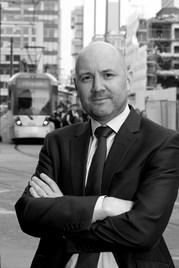 Peer review: Jason Pearce
Peer review: Jason Pearce
Chief Executive, ADComms
|
Uncertainty is a key risk for business planning. Thus, the political continuity which is guaranteed as a result of the Conservatives’ election victory can only support the industry’s aspirations as it prepares to build the world-class infrastructure we will need. I’m delighted in particular that the Government has taken action to bring in legislation to enable work to start on HS2 by 2017 - I look forward to seeing Secretary of State for Transport Patrick McLoughlin’s next step on pushing expansion of this programme out across the UK, and in introducing faster regional services. |
HS2 is a strong commercial project that will create significant growth outside of London and stimulate prosperity across the country. It will prove key to triggering safer and better ways of working, as well as industry improvements on the ongoing management of rail infrastructure. HS2 will also have the opportunity to bring about a much more effective and safer rail operating environment, and deliver an improved customer experience for passengers.
Politically, the current focus for HS2 is in ensuring foundations are laid to start work from a civils perspective - and rightly so. But the role of telecoms and technological improvements in HS2 delivery should not be underestimated. As the main build plans progress, the industry needs to decide how it wishes to use the technology available by engaging with key integrators.
These conversations need to happen early in the process. If the technical structure underpinning HS2 isn’t fit for purpose once installed, future connectivity may be compromised. Building the right connectivity platforms to enable technologies to work with the new infrastructure is crucial.
Additionally, we should not forget our rail infrastructure will need to interact more in future with other transport sectors. We need to consider technology upgrades for HS2 in line with those planned across the UK’s metro, road and air links to create a seamless connectivity experience for customers.
HS2 will revolutionise working practices across the industry and brings the opportunity to deliver safety improvements. Technology will enable the trackside worker to receive crucial safety information faster and more regularly, but also provide more robust working practices which automate processes that can be compromised by human error.
Once constructed, HS2 will have technology built in to reduce the costs to maintain and manage assets, while increasing the safety and capacity of the network. We’re already seeing this happen as the industry transitions to ETCS (European Train Control System). But this also extends to remote monitoring, remote maintenance, and targeted maintenance regimes based around critical assets on the network.
Agreeing on a specific technological plan of action is not an easy task. With a 20-year delivery programme, it’s certain that what is available on the technology front will evolve over this period. However, it’s crucial that an environment is created in which the industry can recognise the role that technology can play. As the technology debate evolves, it will only be through true industry collaboration that the HS2 vision can be achieved.
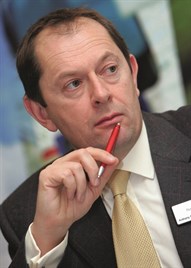 Peer review: Anthony Smith
Peer review: Anthony Smith
Chief Executive, Transport Focus
|
After the pre-election uncertainty, the departmental deckchairs have changed little in transport. We have the same Secretary of State and two ministers who were previously at the Department for Transport. With the same party in power, the broad policy direction is likely to continue. But what will it bring for rail passengers? And what challenges will they face? |
Perhaps the most significant challenge is public spending providing a big policy backdrop. The five-year capital investment spending plan for rail provides stability and certainty for investments, enabling better planning. The Conservatives promoted rail and road spending in specific geographic areas during the election campaign - promises it would be difficult to reverse. While there are considerable pressures on spending, DfT’s budget is not protected. But will the Government see the five-year investment strategies for rail and road as sacrosanct? And will there be pressure on the manifesto commitment to freeze rail fares?
A second challenge is power shifts in different parts of Britain. The Chancellor’s ‘Northern Powerhouse’ project has gained impetus, with new ministers placed to drive it from within different departments. Legislation is already in Parliament to devolve the powers and budgets to combined authorities with elected mayors. The Chancellor has made no secret of the barriers he faced from many quarters from within and without government, but a key principle must be to plan changes with the passenger’s view and interest at their heart.
Scotland and Wales are devolving further. The Scotland Bill shifts power to Scotland, implementing the all-party Smith Commission proposals. Somewhat ironically, this Bill allows a public sector operator to bid for a rail franchise. Another Scottish National Party manifesto commitment is to develop HS2 across the border and within Scotland. Its electoral gains will elevate this priority.
A third challenge is dealing with immediate passenger issues. Investment in rail is vital, bringing longer-term improvements, but London Bridge illustrates how things can go wrong if the passenger perspective is not considered at the start and communication with passengers is poor. Passengers do need to feel that someone is ‘in charge’ and that a plan is in place to reassure them when things go so badly wrong. It is good to see that rail minister Claire Perry is focused on solving this one. Related to London Bridge is the need to compensate passengers for the difficulties they experienced. High in Perry’s in-tray should be the welcome manifesto proposal to improve compensation arrangements.
Another ‘in-tray’ issue is the renewal of the West Coast franchise. It may send shivers down the spine of some who recall events in 2012, but rail franchising has been undergoing an evolution to become more passenger-centric. Passengers should have an improved experience as a result, and we need to continue further on that path.
Despite these major challenges between now and the next election, let’s not forget the prize for passengers. By the time we get to 2020, Crossrail will be operating and HS2 should be on its way. Research we have just published into what passengers want from HS2 shows the prize. Their aspiration is for world-class stations, trains and services that are a national asset. They want a railway they can feel proud of. The Government has to play its part in delivering precisely that.

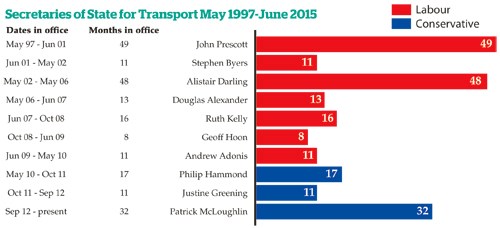
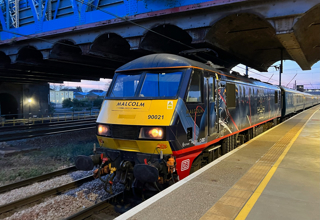
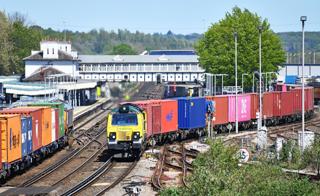
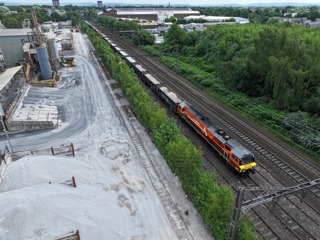
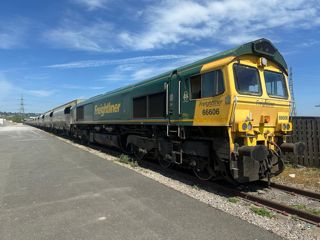











Login to comment
Comments
No comments have been made yet.